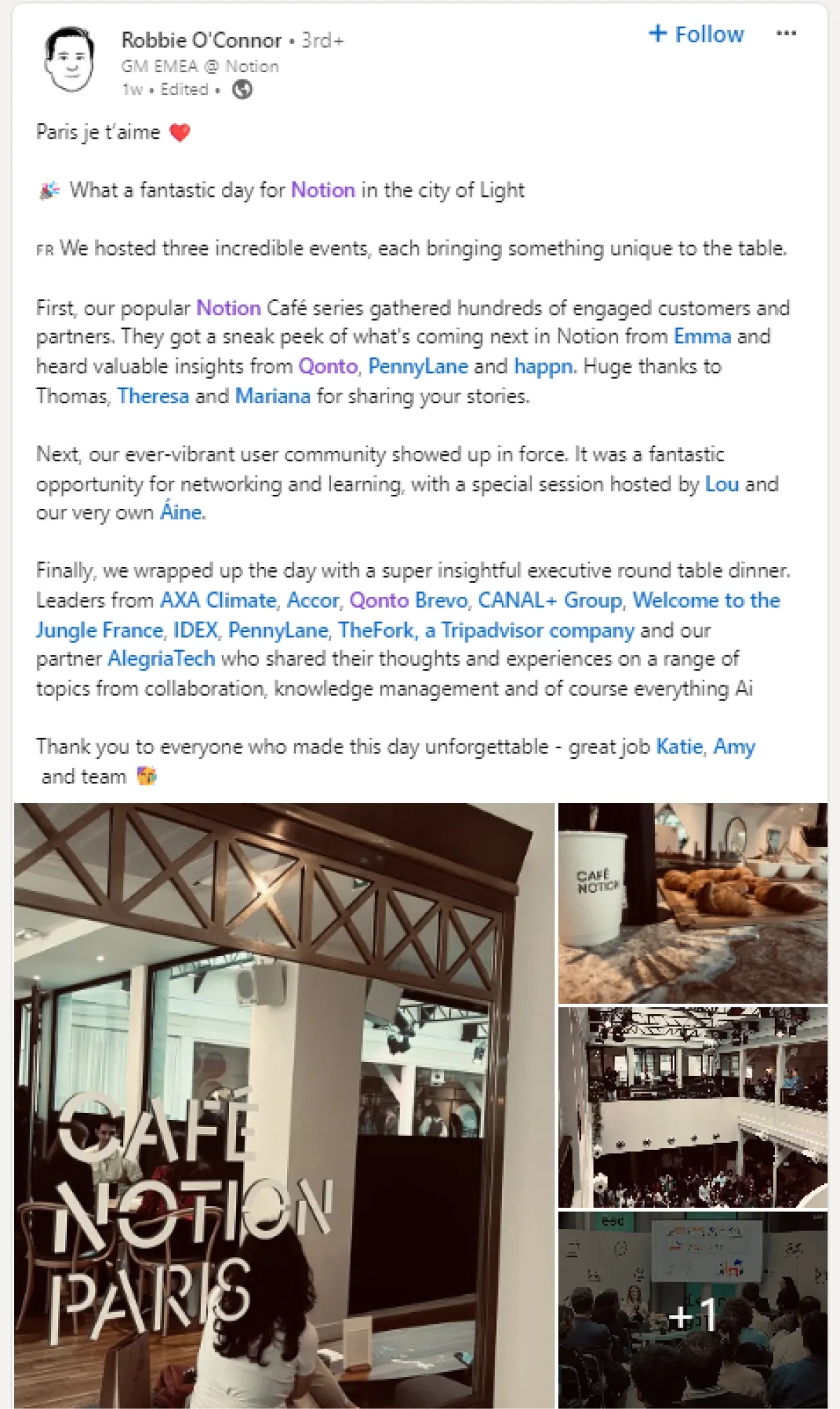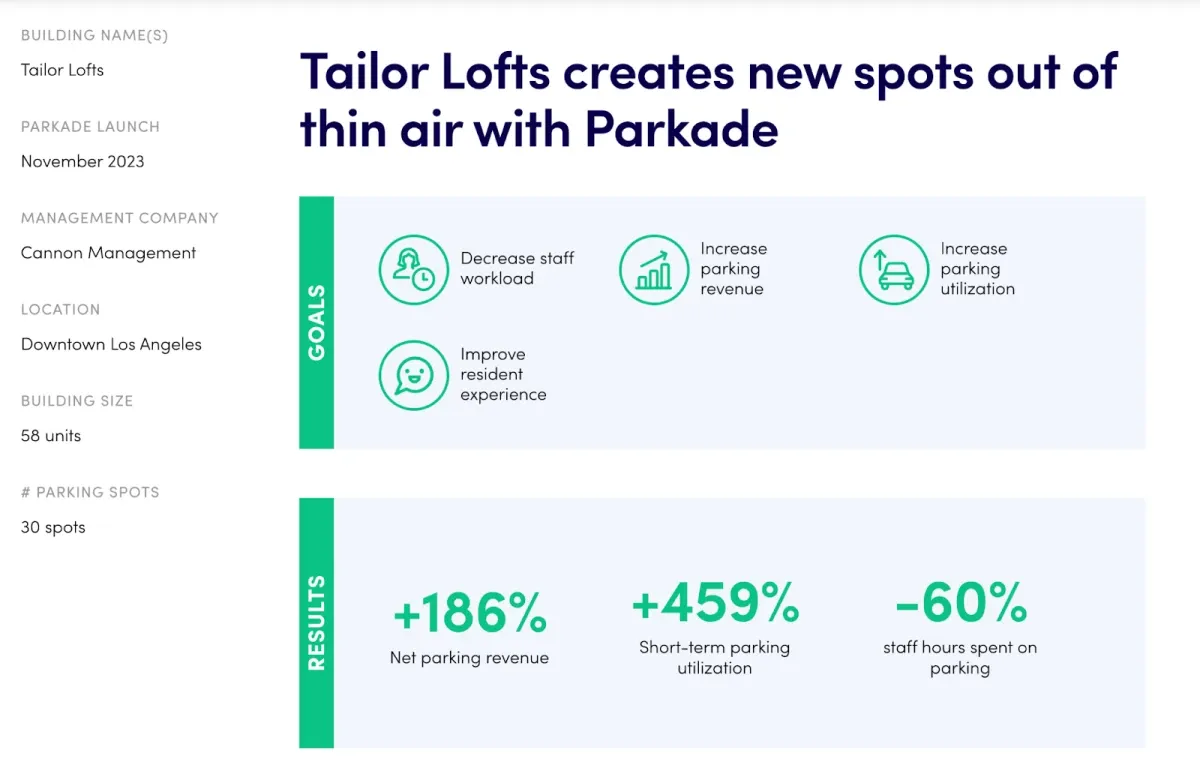Product marketing vs. brand marketing: what’s the difference?
Product marketing is all about specificity and sales, while brand marketing is all about broad awareness and “vibes.”

Marketing isn’t a one-size-fits-all approach. What one marketing team does (and sees success from) in one business can look totally different from what another marketing team does, even in the same industry. It’s all about the specific goals that a company has their sights set on.
Two of the most important branches of marketing are product marketing and brand marketing. Both are important to support a thriving business, but they’re used to achieve different goals in different scenarios.
So let’s touch on some of the main differences between product marketing vs brand marketing and give you a solid understanding of when to lean into one over the other.
Brand marketing
Brand marketing is the strategy that’s focused on building a strong and positive perception of a company, and its products/services.
This is a lot of the big-picture marketing that non-marketing people probably think of. Ad campaigns, creative logos, and other marketing-101 things can be filed under the brand marketing category.
Brand marketing goals
- Awareness - Brand marketing typically aims to get your brand in front of as big of an audience as possible. Exposure and brand recognition are the name of the game here.
- Brand equity - This phrase refers to the value that a brand adds to a product or service. Essentially this is where awareness turns to impact, and the brand recognition that you earn translates into a tool to get more customers.
- Long-term customer loyalty - Brand marketing is a long game strategy that’s focused on building relationships with customers and communities for the long-term.
Key brand marketing strategies
Storytelling
The best way to describe storytelling in marketing is that it’s campaigns launched to create the general “vibe” of the brand. Often, this involves incorporating emotions and imagery to connect with the audience’s core values and aspirations.
Ths storytelling can revolve around both the story of the company, the story of the problem their product/service is trying to solve, or the story of who the audience is/wants to become (and either explicitly or implicitly, how the brand can help to get them there).
Some of the world’s most iconic campaigns are memorable because of their storytelling aspects. Brand campaigns like Dove’s “Real Beauty” campaign, or Apple’s “Think Different” campaign are two famous examples.
Visual identity
One major part of brand marketing is the visual identity that marketers work with design teams to craft. This includes anything from the logo to the color palette to typography to graphic elements and other imagery.
The goal here is to create a logo and an overall consistent and recognizable visual identity that grabs people’s attention and builds connections with the audience.
Effective brand visuals include high-quality product images, and one way to ensure they meet marketplace standards is through proper photo editing techniques. As mentioned in the article "Photo Editing Requirements for Marketplaces," marketplaces often have specific guidelines for image sizes, backgrounds, and formatting. By adhering to these guidelines, you not only ensure compliance but also enhance the brand's visual appeal, making your product stand out.
Brand messaging
Similar to the visual brand that marketing teams create, brand messaging aims to create a consistent “feel” of the brand through the messages that they reinforce across all of their marketing channels. The verbal and visual elements should both align with the overall brand identity.
The easiest way to think of this is to consider what the “voice” of your brand sounds like. Consider what the common thread is throughout all of the different messages you publish across your website, social media, email, product copy, and external communications.
Are you professional? Quirky? Simple? Passionate? What kind of things do you talk about? What do you not talk about? Making all of these decisions is helpful in creating brand guidelines that help you be consistent across all brand communication.
Community building
Because building long-term loyalty is one of the main goals of brand marketing, building a strong community is often an effective strategy. This involves nurturing a community around a brand by connecting on shared values.
Engaging with customers on a deeper level (rather than just on a transactional basis) helps to create a loyal base that feels more personally invested in the brand’s success. This makes customers more likely to stick around and advocate for the brand in their circles.
Community building could be done through social media engagement, forums, or community events.
One example from the last month or so is Cafe Notion. In this event series, Notion team members, partners, and customers gather to talk about not only upcoming/new Notion features, but also hear from other speakers in the space. Events like these help brands to give, rather than just taking

Metrics to track success
Brand awareness
Since visibility is one of the main goals of brand marketing, brand awareness is a critical measure of success.
There are several different ways to measure brand awareness that can vary depending on your brand’s goals. Some popular metrics are branded search volume, social media followers, Google Trends data, Share of Voice (SoV), earned media, referral traffic, and surveys where you ask people about their knowledge/perception of your brand.
Brand loyalty
The best brand marketing initiatives should create long-term brand loyalty. If done the right way, these strategies should help customers form a long-lasting, almost personal connection with the brand that should safeguard them from churn (given your product or service is performing as expected).
To measure brand loyalty, you can track user retention to see how well you’re able to keep customers once you get them.
Customer lifetime value (CLV)
Since brand marketing is focused on drawing in long-term customers, you should expect to generate more revenue from a single customer, compared to brands who haven’t built as strong of a brand.
That’s why Customer Lifetime Value (CLV) is an important brand marketing metric. This refers to the total revenue a business can expect from a single customer over the course of their entire relationship with a brand.
Net Promoter Score (NPS)
One of the simplest metrics to measure to gauge the success of your brand marketing campaigns is the Net Promoter Score, or NPS. This metric measures how likely your customer is to recommend your product or service to someone else.
This is a strong indicator of how happy your customers are with both your product and your brand.
Product marketing
Specificity is the name of the game for product marketing. In contrast to the broader campaigns that brand marketers created, product marketing campaigns are highly targeted, focusing on promoting and selling specific products to specific customer segments.
Product marketing goals
- Driving immediate sales - Brand marketers may be a little more aligned with creative teams in your company, while product marketers work closely with sales teams to create campaigns that lead to immediate and direct sales.
- Highlighting product features - Product marketers, as the name implies, but the product at the forefront. They highlight what the product can do, its technical specs, what problems it solves, and what sets it apart from other products.
- Targeting specific customer needs - Typically, the best product marketers take a “painkiller” approach to marketing. They clearly understand what pain points or needs their customers have, and they become laser-focused on proving exactly how their product can solve that problem or meet that need.
Key product marketing strategies
Product launches
Every product marketer loves a good product launch. This is the strategic planning of introducing your new (or updated) product to the market.
While there are many technical aspects of product launches that the product team takes care of beforehand that involve preparing the actual product to hit the market, product marketers focus on the best way to promote this launch.
This can include creating ads, hosting events, buying traditional media placements, organic social campaigns, press releases, videos, or newsletters,and even brainstorming innovative Product Launch Ideas, to name a few. To create outstanding video content, you can collaborate with video marketing agencies to ensure successful production and effective distribution strategies.
This may also involve creating collateral to have on-hand for any interest generated from the launch campaign. We’ll talk about what some of that collateral may be in the section below.
Demos and feature highlights
Product marketing campaigns showcase key product features and the benefits that those features can provide to the specific audience they’re targeting.
This could include demo videos, infographics, data sheets, or landing pages that clearly lay out all of the features of the product. Sometimes, these may be pretty technical, especially if they’re targeting a more bottom-of-funnel audience who needs more research to validate their purchase. But sometimes this may be more focused on acknowledging customer pain points and demonstrating how the product can solve those issues.
Typically the best strategy here is “show, not tell.” Product marketing campaigns typically include lots of screenshots and imagery of what the product looks like and how it works. To effectively promote and market a specific product, marketers rely on multiple strategies. Among these, creating engaging and informative demo videos stands out as pivotal. If you want to make a product demo video that captures your audience's attention and drives conversions, consider something visual and impactful.
Take a look at the landing page for our Copilot product below for an example of how to address pain points and show the product in action.

Testimonials and case studies
Social proof is extremely important when consumers are making a decision. When someone is deciding whether or not to buy a product and they see/hear that other people like them have bought it, it helps to build trust and show that your product is reliable and does what it says it does.
This is the crux of why things like testimonials and case studies are so effective. It’s putting your prospective customers right in front of satisfied customers, letting them hear all of the ways that your product has solved a shared problem.
Quotes are really powerful to include here, as well as tangible data about the impact your product has had.
Parkade, a parking management platform, has a strong focus on case studies and makes sure to include lots of numbers right at the top of every case study to grab people’s attention.

Content like this is really helpful in helping prospective customers overcome hesitation or giving champions tools to better make the case to upper-level management.
Competitive analysis
Product marketers also use competitive analysis as a key strategy to help differentiate their product. They use this to gain insight into their competitors’ strengths, weaknesses, and market positioning. They use strategies like SWOT analysis, market research, and SEO research.
By doing this, they can identify gaps in the market, understand what makes their product stand out, and uncover untapped potential.
While this is more of an underlying strategy that can support their marketing efforts, rather than a customer-facing strategy, it’s one of the key things that sets product marketers apart from brand marketers. Another important thing to note here, which reinforces this difference, is that this is often a collaborative process between the product team and the product marketing team.
Metrics to track success
Sales numbers
Since many product marketing campaigns are highly specific and targeted, you want to see a direct impact on sales. By using things like UTM codes and cookies, product marketing teams should be really granular about tracing which campaigns lead to which results.
Conversion rates
Product marketing campaigns are created to drive people to immediate action. Because they’re crafted for specific audiences, the messaging used should strike a nerve with the audience. Tracking conversion rates, whether it’s in downloading a gated material, requesting a demo, or converting into a customer, is one of the most important metrics to track.
Customer acquisition cost (CAC)
Targeted product marketing campaigns are created to attract and convert potential customers efficiently. Compared to brand marketing, where it may take tens or even hundreds of touchpoints before someone becomes a customer, product marketing campaigns are meant to draw people in quickly.
Because of this efficiency, lower customer acquisition costs (CAC) point to a more effective product marketing strategy.
Product adoption rates
Product marketing is all about, well, the product. So when people become a customer, the campaigns that they experienced prior to onboarding should have hopefully given them not only a baseline education about but also urgency to use your product.
Effective product marketing campaigns should have hopefully laid a strong foundation for more in-depth engagement in the product. So, higher product adoption rates are often positive indicators of great product marketing. You can use dashboard reporting tools to track these engagement metrics, and get better insights into user behavior and product adoption. Remember, higher product adoption rates are often positive indicators of great product marketing.
Key differences between product marketing vs brand marketing
By now, we hope you have a really clear understanding of how product marketing and brand marketing differ. But let’s just do a quick recap of some of the main differentiators.
- Scope - Brand marketing is broad, while product marketing is specific.
- Goals - Brand marketing is focused on long–term relationships and perceptions, and product marketing is focused on immediate sales and product-specific engagement.
- Target audience - Brand marketing speaks to a broad audience to maximize awareness, while product marketer speaks to specific customer segments to drive purchases.
- Time frame - Brand marketing is long-term, and product marketing is short-to-medium term.
- Tactics - Brand marketing uses tactics like sponsorship activation, brand partnerships and content marketing, and product marketing uses tactics like promotions, product demos, and targeted ads.
When to use each strategy
Let’s look at a few scenarios where it may be most effective to use product marketing vs brand marketing, and vice versa.
Scenarios where you should use brand marketing
New market entry. If you are trying to expand into new markets, it’s important to establish a strong brand presence to build initial awareness and credibility.
Opening a fundraising round. Investors are impressed by a strong brand with a large and positive reputation. Brand building tactics could help you put your best foot forward to draw in investor funds.
Building a loyal customer base. Let’s say you already have a decent amount of customers, but you have a problem getting people to stick around for the long term, despite having a great product. Brand marketing campaigns can help you forge a better connection with these customers to generate loyalty.
Enhancing overall brand reputation. We’ve all seen some brands make a terrible decision that puts them in “cancel” territory. If these brands were to immediately come out with product-driven content to build their sales up, it would probably do more harm than good. In these cases, brand marketing is the best option for damage control to improve the brand image and help to build back up a positive reputation.
Scenarios for product marketing
Launching a new product or features. This is the perfect moment to educate your audience and generate some more demand for your product. Use product marketing tactics to highlight what makes your product stand out, what it can do, and why your audience should care. And most importantly, product marketing campaigns can help to drive sales quickly.
Boosting sales for a specific product line. Let’s say your company really wants to push a specific product line, whether it’s because it’s the bread and butter that makes you money, or it’s something that has experienced a dip in sales and it needs to be revived. Since product marketing is all about specificity, you can put a spotlight on these products (or features) to boost sales.
Addressing specific customer pain points. Perhaps there’s a customer pain point that has become especially salient lately, whether it’s due to economic conditions, tech advancements, political trends, or anything else that can have an impact on your customers. You can leverage product marketing to highlight your product in the context of that problem, presenting it as the ultimate painkiller.
Keep in mind, you probably need both
When it comes to the debate of product marketing vs brand marketing, it’s not so much which should you use, but rather when you should use each tactic.
The best marketing teams will dabble in a little bit of all kinds of marketing, and most importantly, will align every single thing they do with the wants, needs, priorities, and frustrations of their customers.
